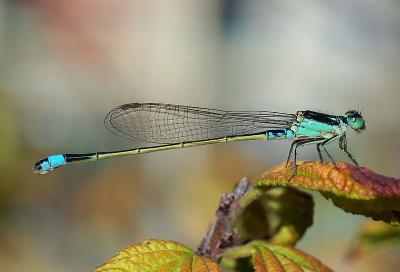Damselflies

Damselflies are colorful insects with a long thin body.
In fact, my youngest sister used to call damselflies "thermometers" when she was a small child due to their thin body. And indeed, they do resemble winged thermometers!
Differences between Dragonflies and Damselflies
Damselflies are similar to dragonflies, but damselfly bodies are usually thinner than most dragonflies. However, the main way to tell damselflies from dragonflies is that dragonfly eyes touch each other, but damselfly eyes are separated. If you watch the video below you'll get to see close-up views of damselfly eyes.
Both damselflies and dragonflies belong to the order Odonata, but damselflies belong to the suborder Zygoptera and dragonflies belong to the suborder Anisoptera.
Damselfly Color Variations
There are many species of damselflies, with many color variations as the following You Tube video shows.
Damselfly Life Stages
Damselflies begin as eggs and then undergo a lengthy larval stage. Because damselflies spend their larval stage in an aquatic environment, you often see adult damselflies near ponds, lakes, or other bodies of water. The adult damselflies mate and lay their eggs near water.
After hatching, damselfly larva feed on other small aquatic organisms. The larva goes through several molts and when ready to metamorphize into an adult damselfly, it leaves the water, and goes through another molt and out emerges an adult damselfly.
Damselflies are found in many parts of the world. Adult damselflies live for a few months and feed on other small insects, including mosquitos. Adult damselflies mate and lay their eggs near water and then the life cycle begins again for a new generation.
